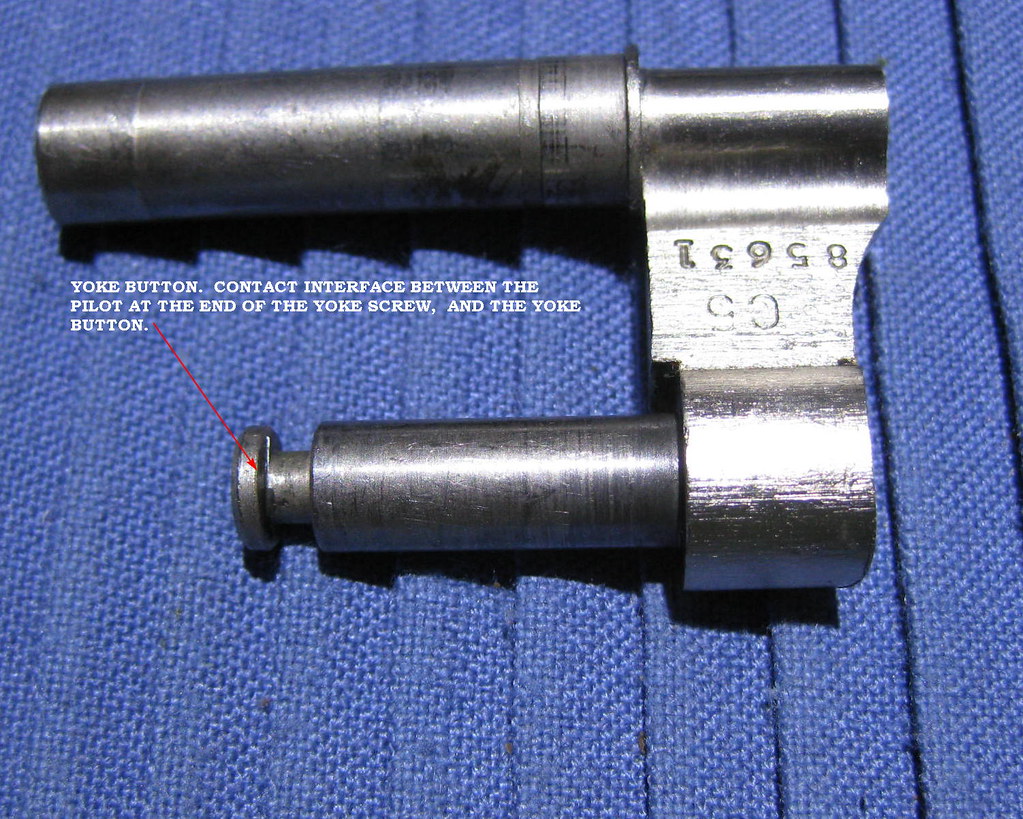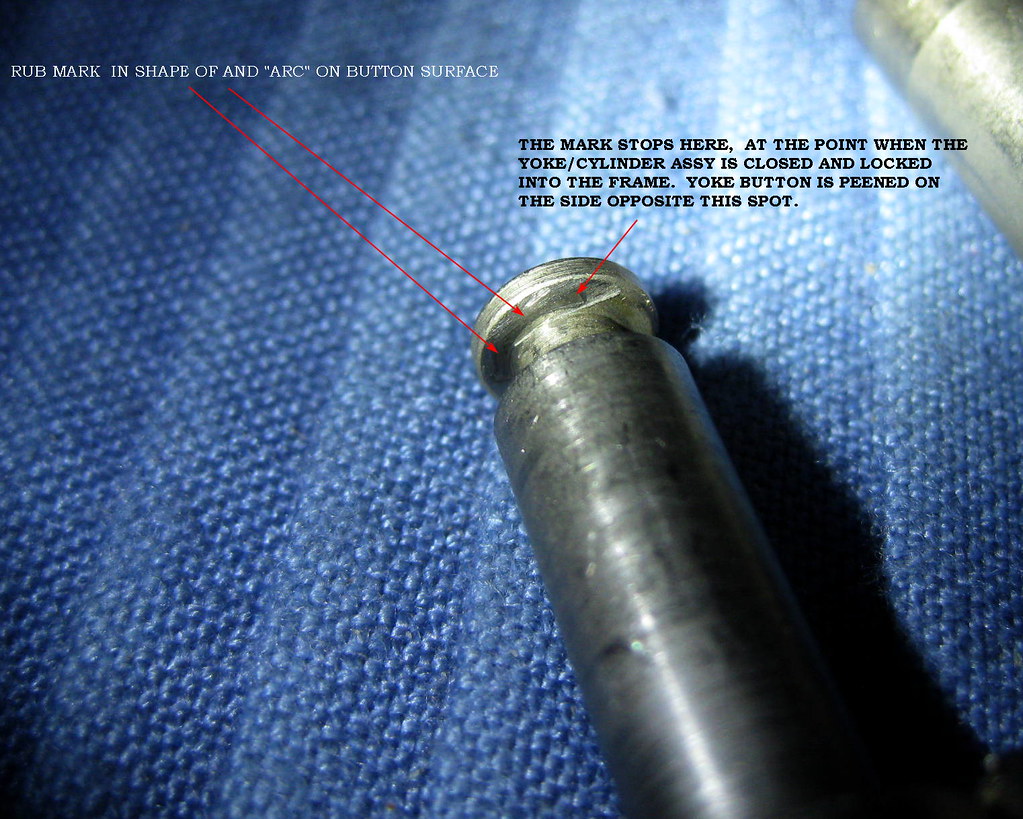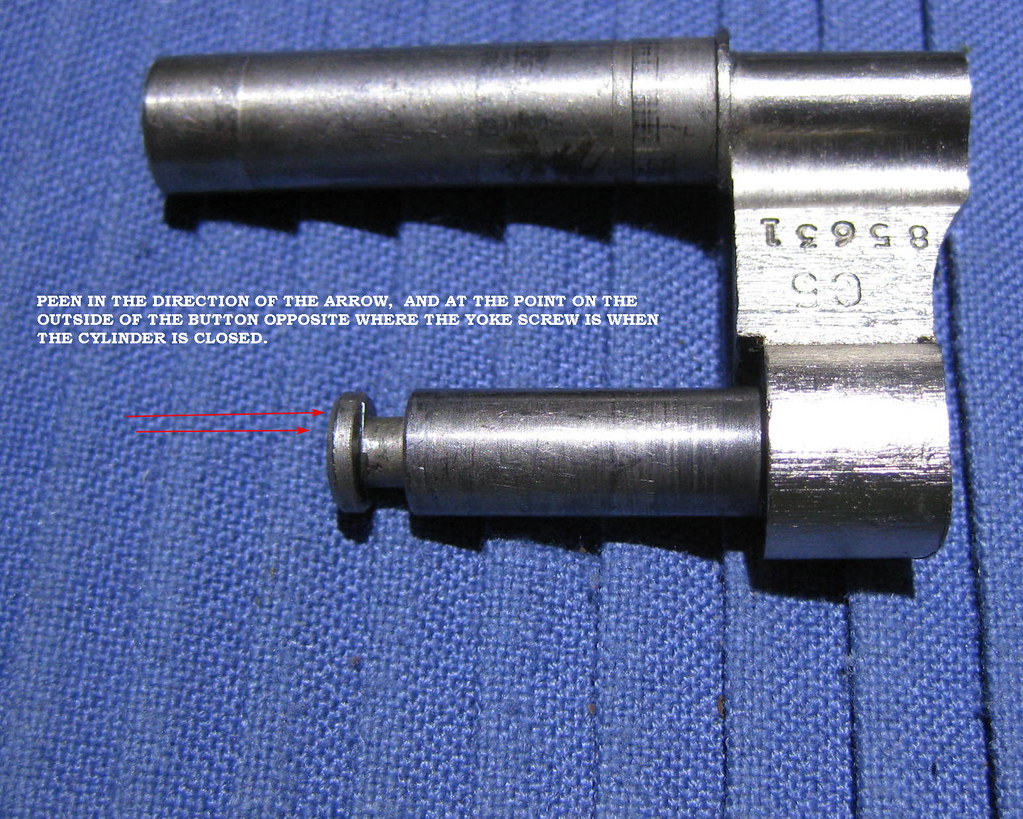To fit the yoke properly, the yoke button at the end of the stem will have to be fit to the screw.....not the other way around.
If you look on the front facing flat part of the button itself you should see a wear pattern from the pilot (unthreaded tip) of the yoke screw. The wear pattern looks like an arc on the smooth surface of the button. You may need a magnifier to see this contact arc. The button will need to be peened on the back side (outside) of the button just opposite where this mark terminates.
You can use a small 4 ounce hammer to lightly strike the button, and move the button canopy forward. This moves the contact surface of the button toward the screw pilot (the unthreaded portion at the end of the yoke screw), and closes the gauge or opening between the yoke button and this screw pilot. Carefully strike the outside of the button (not the side) at the place indicated, then insert the yoke only into the frame and try the fit on the screw. Keep lightly peening until the gauge is closed and there is no movement of the yoke forward when it is in position (closed in the frame) and the yoke screw is fully tightened. (remember to try a different screw first to see if that will remedy w/o peening)
There should be slight contact between the yoke screw pilot and the yoke button throughout the opening/closing movement of the yoke itself. The open gauge or end shake you are feeling on the yoke is due to wear and peening at the point on the button where the yoke is fully closed in the frame. If this peening is not severe, you can sometimes substitute a new or different yoke screw to fix the issue. Many people find that the middle screw in the sideplate....the one just above the rear of the trigger guard... will work to close the end shake. Try switching the screws prior to doing any peening on the yoke button.
Remember also that shims on the yoke stem will remedy the open gauge between the button and the yoke screw, but will move the yoke itself forward, and thereby, also allow the cylinder assy to move forward. As a result, the resulting inevitable end shake on the yoke barrel will also have to be remedied by shimming or stretching. Proper fitment of the yoke screw and the yoke button is the best remedy for the problem you describe, because the yoke is restored to it's proper position in the frame (fully to the rear) without shims.....and without causing end shake on the cylinder.


